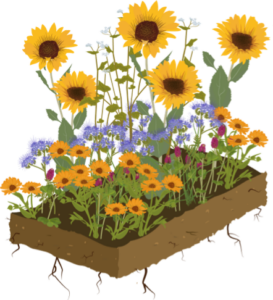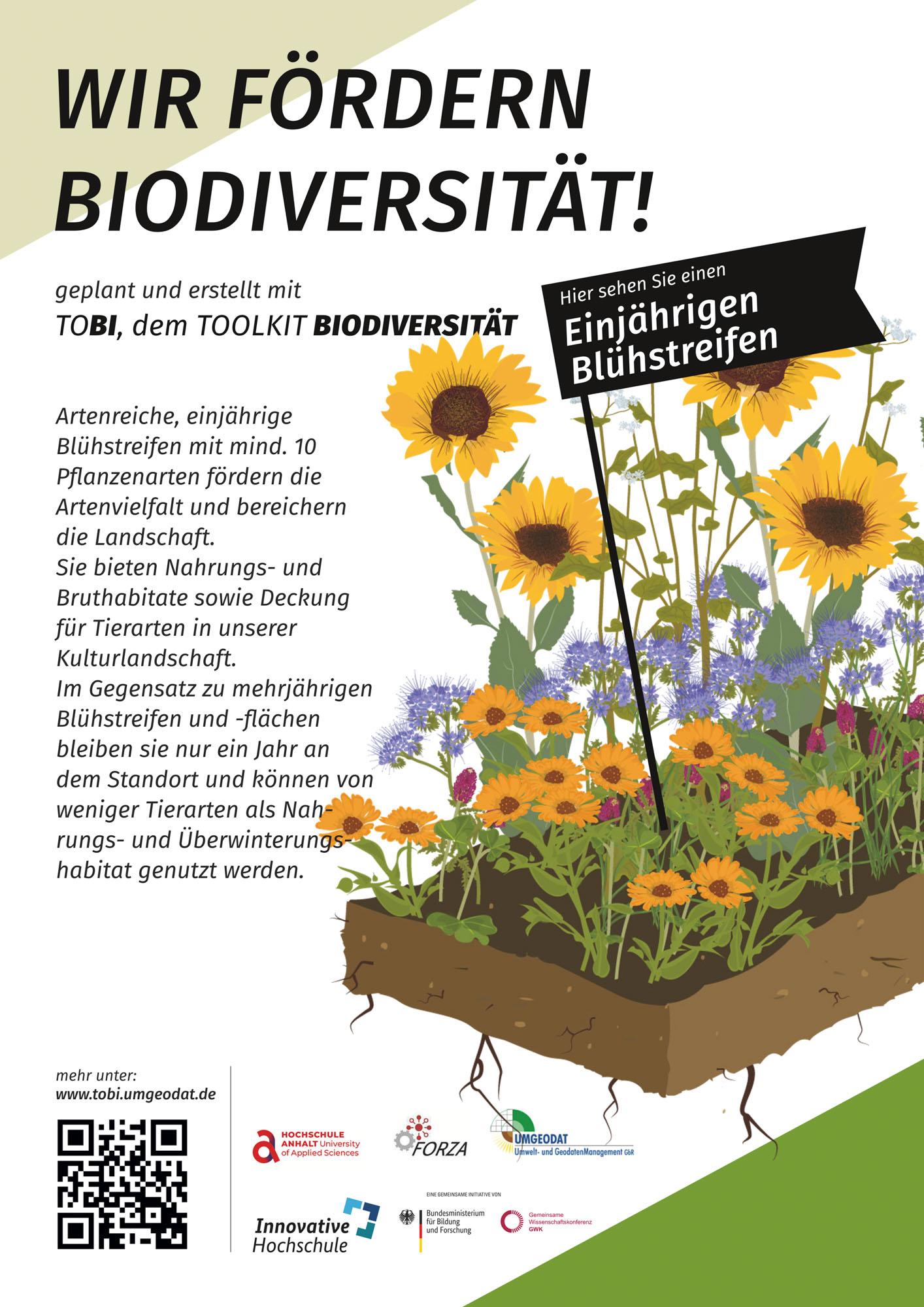Find out all about annual flower strips
Sind Sie sicher ob der Standort geeignet ist?
Das Profitool erkennt Flächen und kann die optimale Nutzung bestimmen. PROFITOOL
Besonders effektiv in Kombination mit
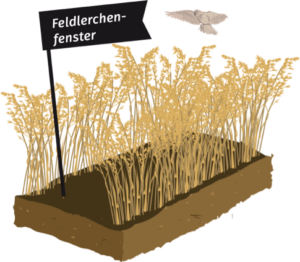
Feldrandschild
Mit dem Feldrandschild teilen Sie der Umgebung mit, welche biodiversitätsfördernde Maßnahme Sie umgesetzt haben.
Do you need support?
Then please contact us by phone 039209 / 202076 or by e-mail at info@stiftung-kulturlandschaft-sachsen-anhalt.de.
Requirements
Strip width and length
linear & flat, min. 5 x 10 m, 2 x as long as wide
Site and soil conditions:
dry
- sunny
Costs, seed costs:
50 - 100 €/ha pure seed costs. plus annual tillage 300 - 500 €/ha. plus tillage
Machinery requirements:
Cultivator
rotary tiller
Drilling machine
Mower
Grinder or chopper
- Roller
Implementation period:
March-mid-April, max. end of April
Implementation
step-by-step instruction

1. Site selection
Suitable locations are:
- in the open fields
- along sunny sides of hedges, rows of trees, forest edges
Less suitable locations are:
- with problematic weeds such as couch grass, creeping thistle, etc. - these sites need a particularly good soil preparation
Not suitable locations:
- that are permanently wet
Size: at least 5 x 10 m wide, must be 2 x as long as wide
- linear & flat up to 20 % of the arable land, max. 2.5 ha, a higher proportion is not remunerated
- The wider the strip, the more effective the measure (fewer chances for predators)
Sowing date
Sowing should take place as soon as the weather permits; by the end of April at the latest.
- in regions with severe spring drought, if possible until mid-April
Seed selection
Site-adapted seed mixture with at least 6 plant species
- The more species-rich the mixture, the greater the positive ecological effects
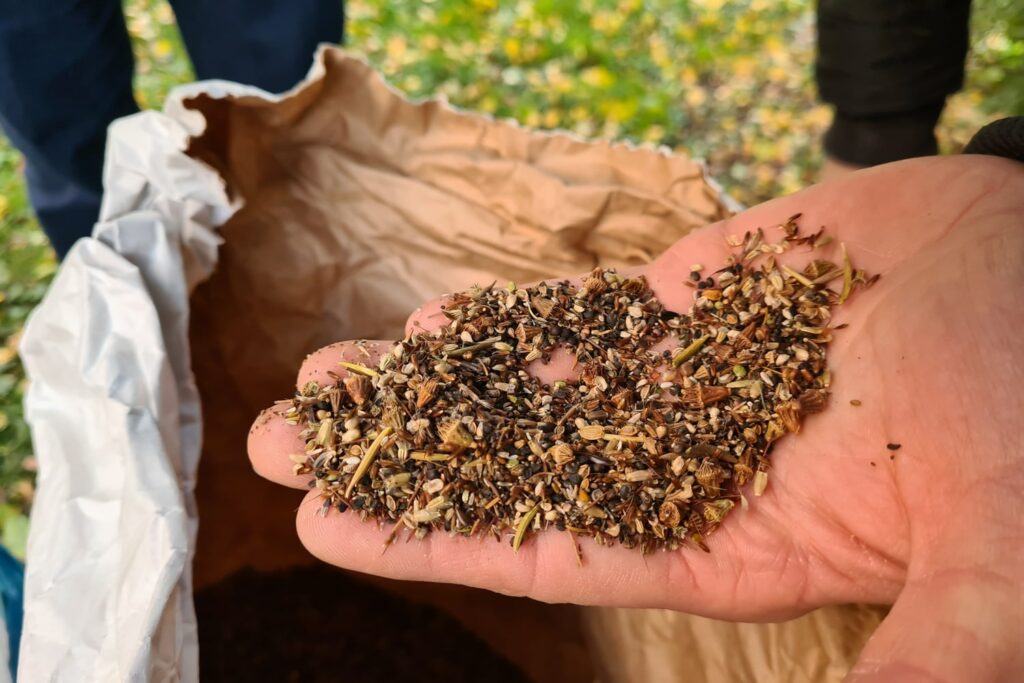
Seed ordering
- Place your order as soon as possible (long delivery times possible)
- Seed quantity approx. 10 kg/ha (depending on mixture)
- Mixing with filler (soya meal or crushed maize) to approx. 50 - 100 kg/ha (total application rate, can be ordered ready-mixed from the companies) -> to avoid segregation, for even application
Seed costs approx. 50 -100 €/ha
Bezugsquellen:

Seedbed preparation
Thorough tillage (stubble cultivation, tilling, cultivating) to produce a fine-crumb seedbed for fine seed sowing (such as arable forage sowing or grassland) must be carried out in preparation.

Sowing
Crucial for successful sowing:
- Sow seeds on the surface (light germinators)
- Do NOT drill in but only ‘trickle on’
-> the light-coloured pieces of the filler must be visible on top - Harrow + seed coulters up!
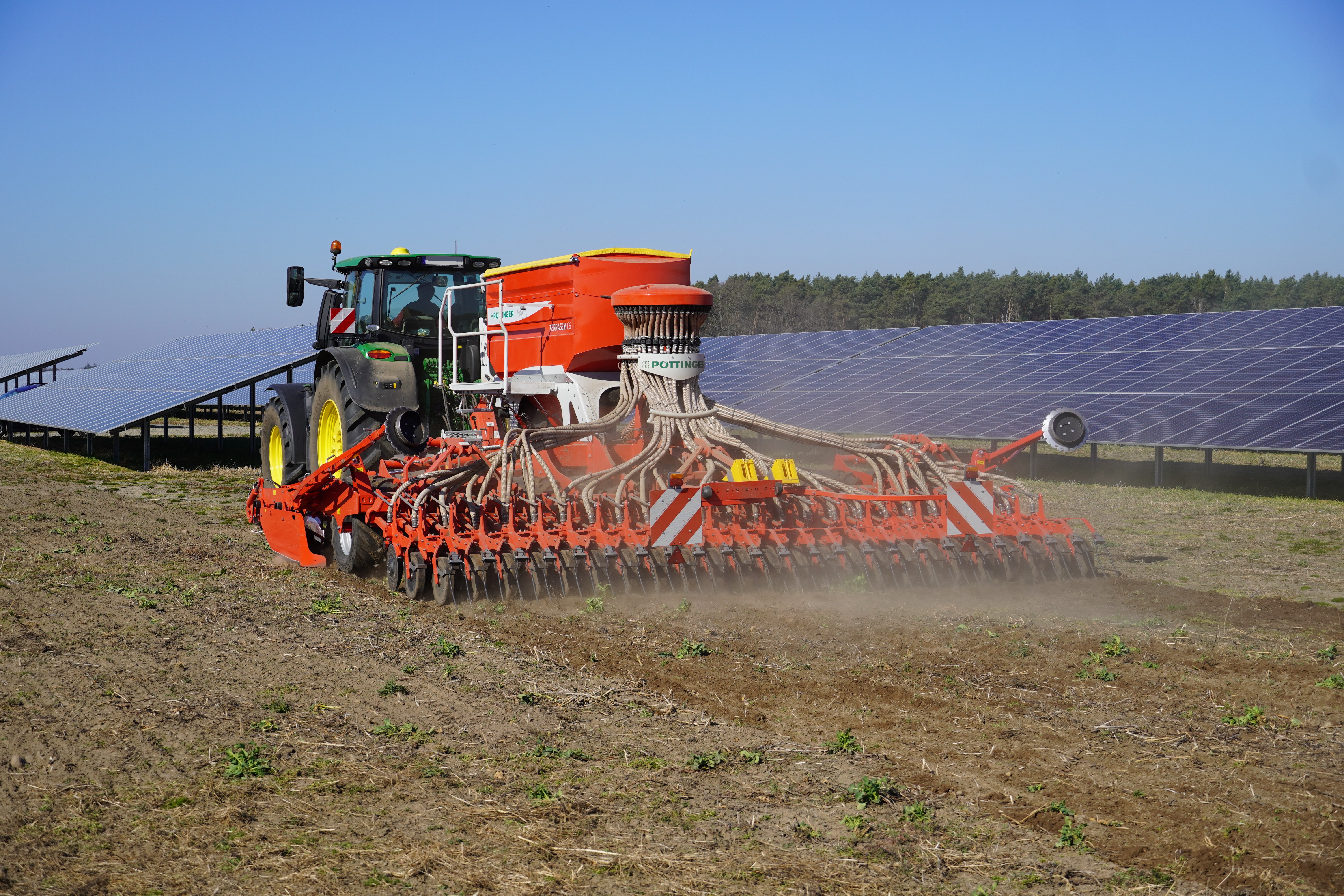
Rolling
...is important for good contact of the seeds to the soil, which they need to germinate successfully
Care
step-by-step instruction
Maintenance cutting
If there is a high incidence of accompanying weeds or grasses, a high maintenance cut can be carried out.
- Recommended cutting height: 20 cm
- The general rule is: as little as possible, but as much as necessary
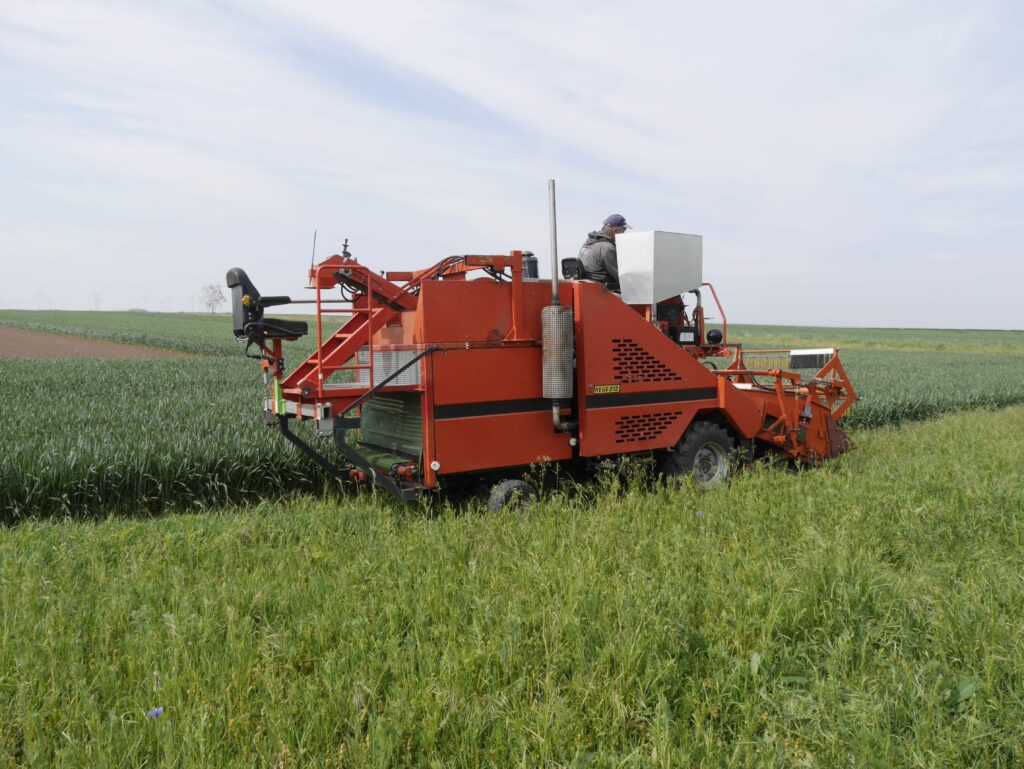
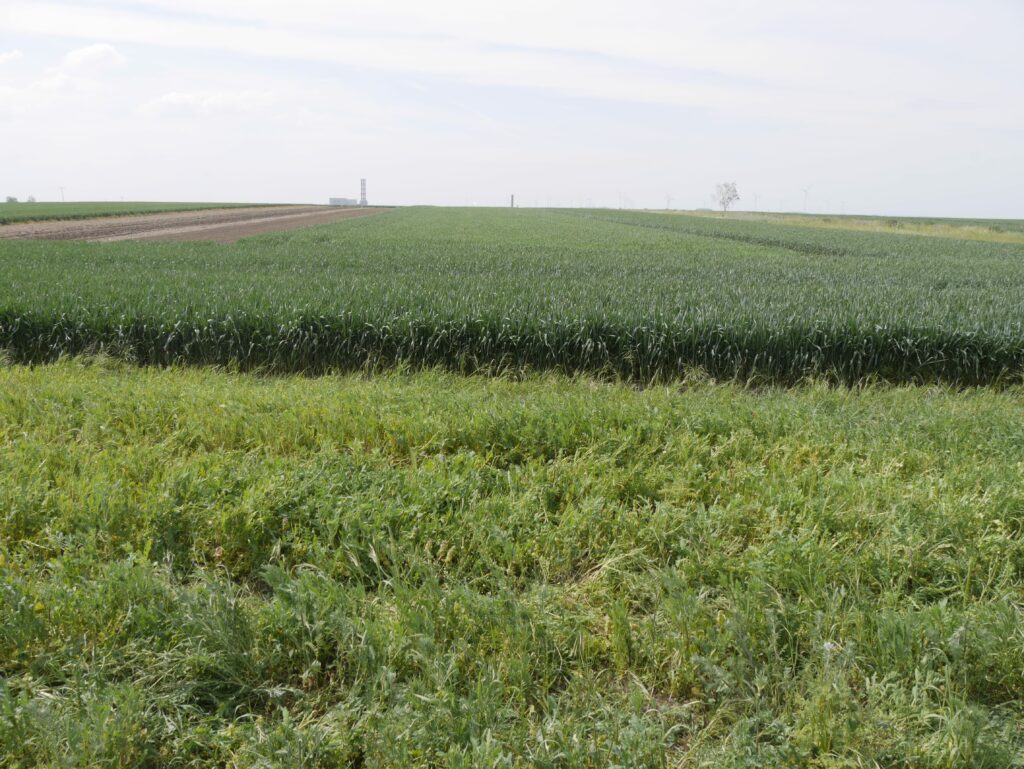
Notes
- No use of pesticides and fertilisers with nitrogen
- Closed season: Mowing is prohibited during the breeding and setting season from 1 April to 30 June
- At least 30 % of the flowering strip should remain dormant in winter. It should not be ploughed until 15 February of the following year. The remaining areas can be ploughed from 15 October
- The strips should remain in place for as long as possible, as they also provide valuable refuge and feeding areas in autumn and winter
Ecological impact
Species-rich annual flower strips promote biodiversity and enrich the landscape. They provide feeding and breeding habitats as well as cover for many animal species in our cultivated landscape. In contrast to perennial flower strips/areas, however, they have shorter lifespans and can be used by fewer animal species as a source of pollen and nectar.
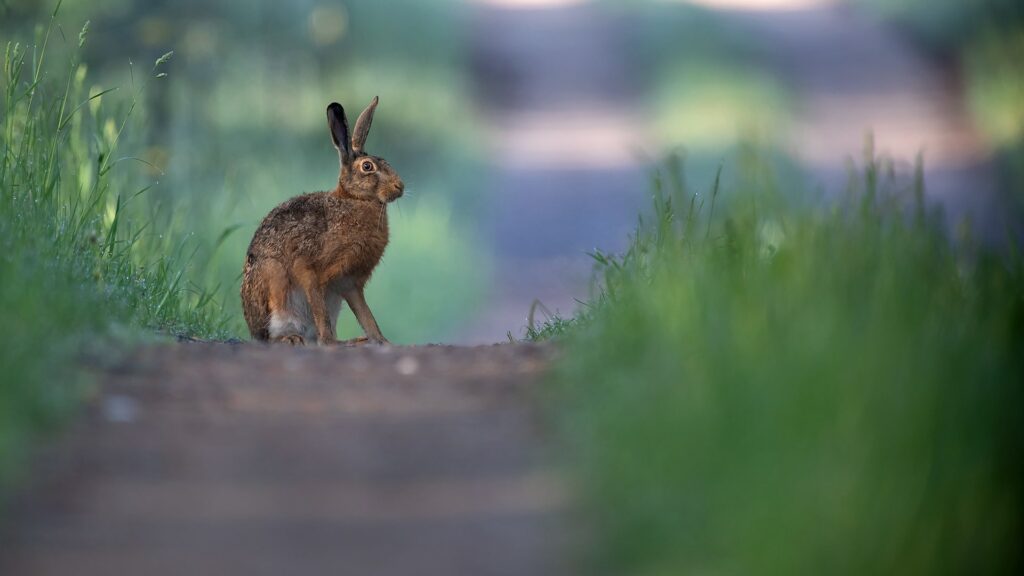
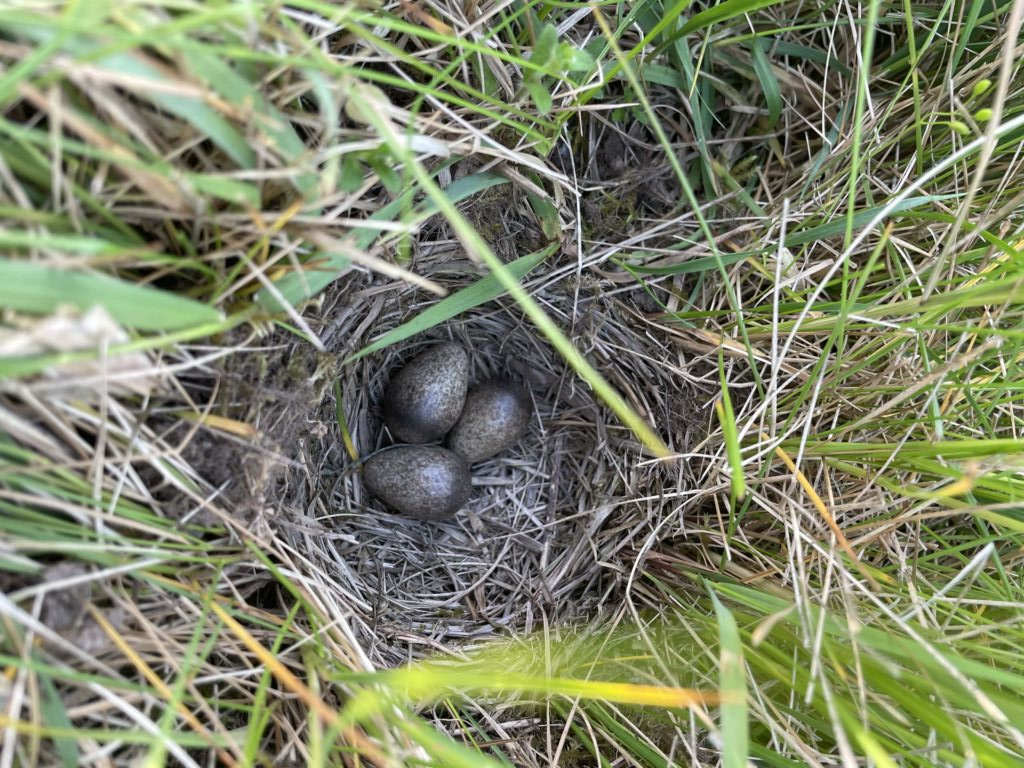
Species diversity
Species-rich annual flower strips are used by various less specialised insect species, such as honey bees, as a source of pollen and nectar. Seed-eating birds, such as goldfinches and greenfinches, like to utilise the sunflower seeds on offer.
